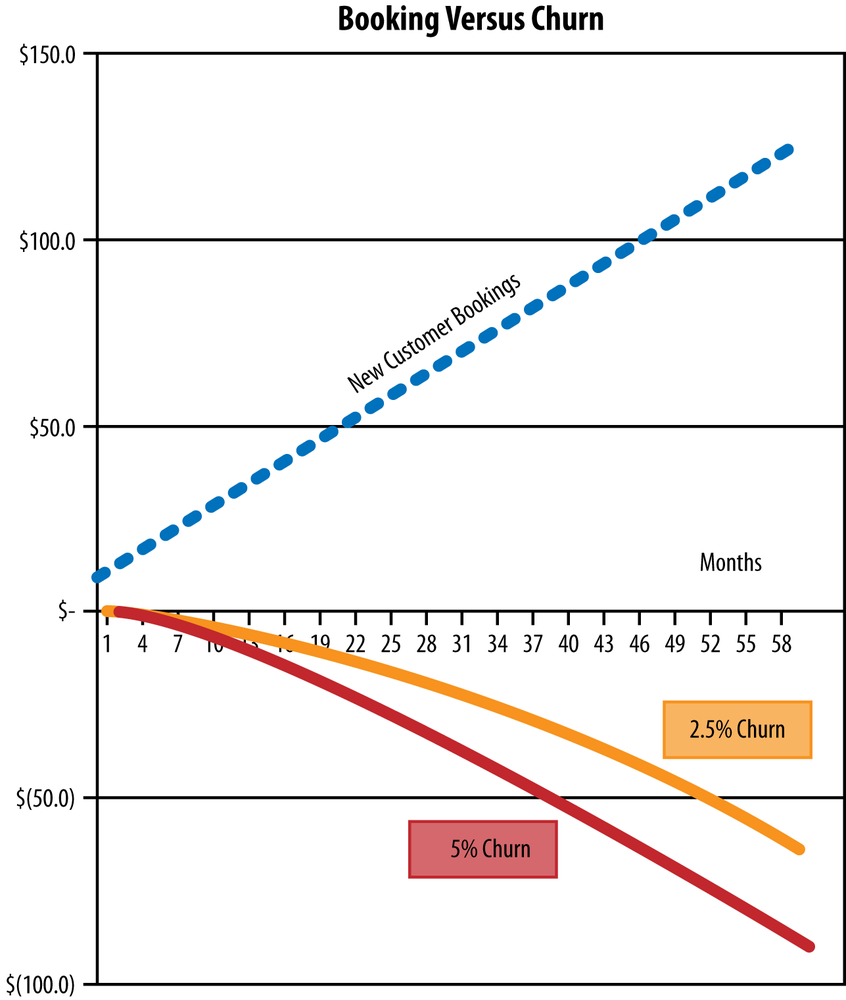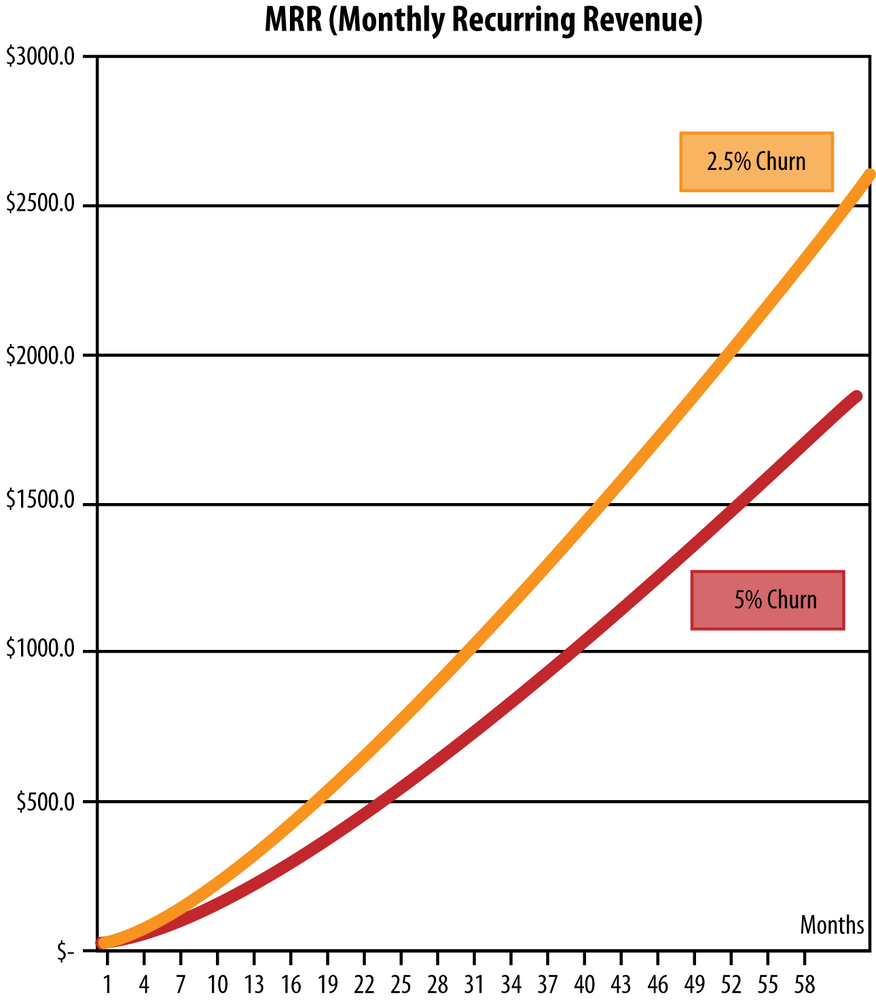Chapter 9. Why Churn Is So Critical to Success in SaaS
As a SaaS company becomes larger, the size of the subscription base becomes large enough that any kind of churn against that base becomes a large number. That loss of revenue requires more and more bookings coming from new customers just to replace the churn. As a result, growth slows substantially.
To illustrate this point, I built a very simple model and graphed the output. The model starts with MRR (monthly recurring revenue) at zero and bookings from new customers at $10k in the first month, increasing by $2k every month after that (represented by the dotted blue line in the graph).
The red and yellow lines show the lost revenue due to customers cancelling their subscriptions (churn). These show the impact of churn at a 2.5% and 5% monthly level.
Looking at this graph, we can see that churn is really not that big of a number in the early startup months. But as the company gets toward the end of its fifth year, even at a relatively low churn rate of 2.5%, you are losing $64k a monthâwhich is extremely hard to replace with new customer bookings. And with a churn rate of 5%, that number is even worse, at $90k.

The next graph shows the impact on total MRR of each scenario, which is fairly substantial.

The Impact of Negative ...
Get Managing Startups: Best Blog Posts now with the O’Reilly learning platform.
O’Reilly members experience books, live events, courses curated by job role, and more from O’Reilly and nearly 200 top publishers.

